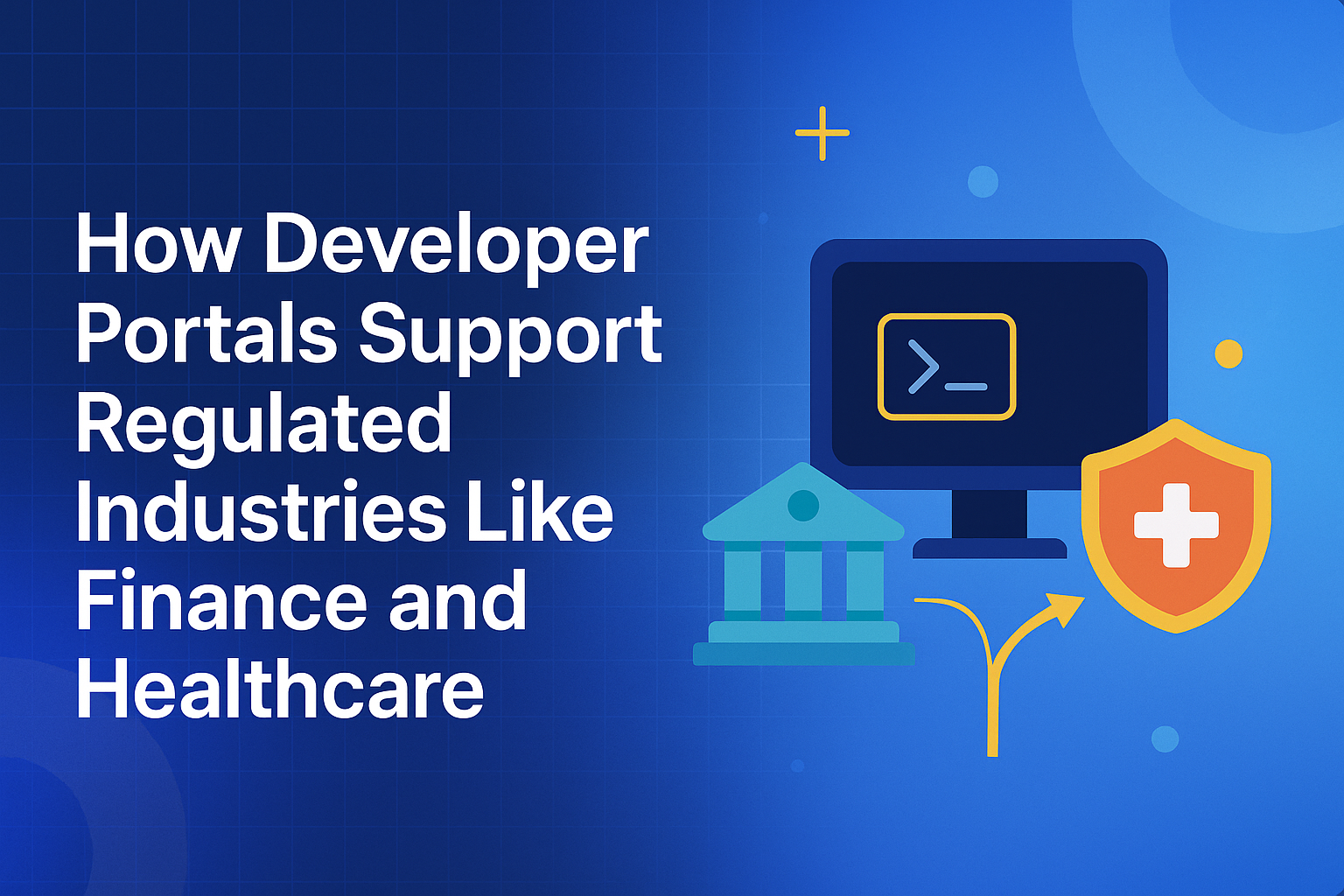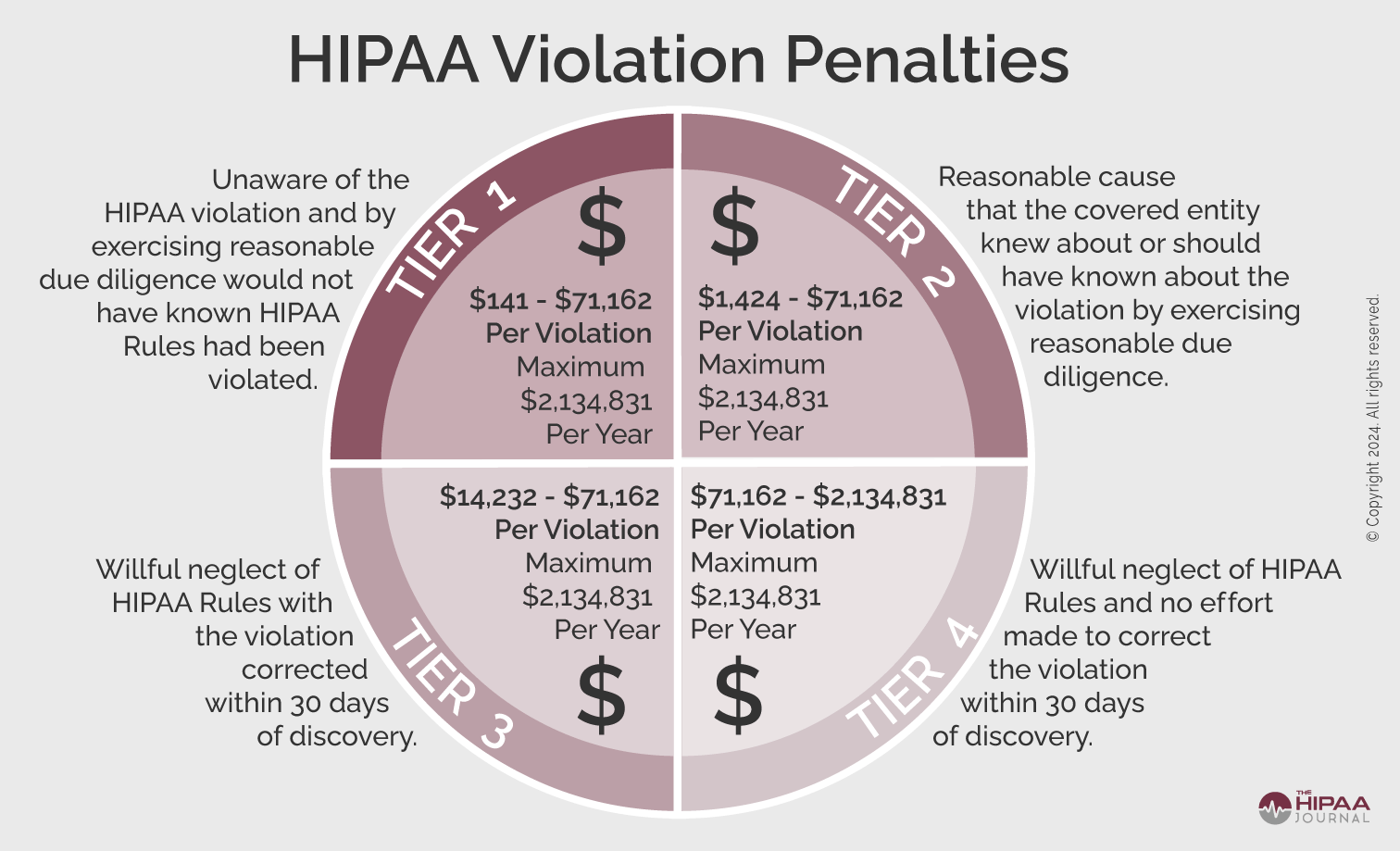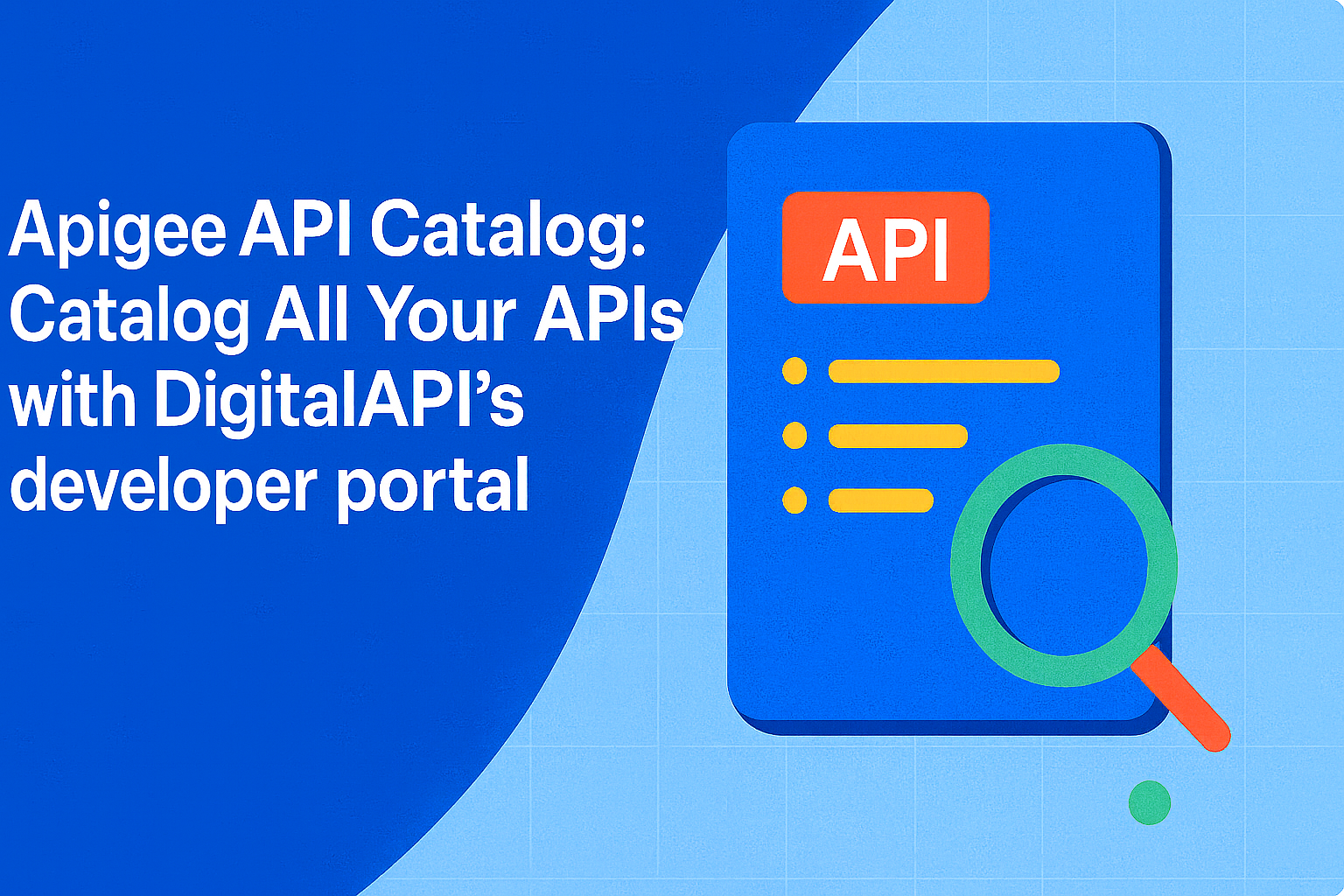Blog
How Developer Portals Support Regulated Industries Like Finance and Healthcare
Updated on:

What would happen if a finance app mishandles payment data or a healthcare platform failed to safeguard patient records? The answer isn’t just reputational damage. It’s multimillion-dollar fines, revoked licenses, and decreased customer trust.
Meanwhile, regulations like PCI-DSS, KYC/AML, HIPAA, and HITECH exist to protect sensitive information, but they also create a steep learning curve for developers who need to move fast without breaking the rules.
This is where a specialized developer portal comes in. Instead of leaving developers to interpret complex compliance frameworks, a portal provides a centralized, compliance-approved hub for APIs, workflows, and security controls.
The portal offers automated checks, standardized policies, and secure self-service access so teams can innovate while staying on the right side of regulators. For regulated industries such as finance and healthcare, where mistakes are costly, developer portals support productivity and act as a guardrail to ensure every integration, transaction, and data exchange meets strict regulatory standards.
In this blog, we’ll explore how specialized developer portals can support regulated industries like finance and healthcare.
Let’s dive in.
Why regulated industries like finance and healthcare need specialized developer portals
In highly regulated industries, developer portals do more than provide documentation and APIs. They embed compliance requirements, ensure data security, and streamline trust between partners. From PCI-DSS and KYC/AML in finance to HIPAA and HITECH in healthcare, specialized portals help organizations meet strict standards, reduce risk, and simplify audits while enabling safe innovation.
Let’s explore why these industries need specialized developer portals.
1. Enhancing compliance and security
In regulated industries, failure to meet compliance and security standards can destroy trust and carry severe financial and legal consequences. For instance, a financial institution that mishandles cardholder data could face penalties under PCI-DSS, along with reputational damage.
Recently, TikTok was fined $600 million for failing to comply with EU data protection regulations.
Similarly, a healthcare provider that violates HIPAA can be fined millions of dollars and lose patient trust permanently.
Here are some of the HIPAA violation penalties:

Beyond the financial penalties, the operational fallout, such as revoked licenses or service disruptions, can cripple an organization.
Developer portals serve as a safeguard against these risks. Unlike generic portals, specialized ones are designed with security and compliance in mind. They offer features such as role-based access control (RBAC), which ensures only authorized developers can view or use sensitive APIs.
Portals can enforce end-to-end encryption policies, ensuring that sensitive information, whether it’s patient health records or financial transactions, cannot be intercepted or tampered with during transmission.
Specialized portals maintain detailed audit logs, capturing who accessed what, when, and under what permissions. These logs not only help organizations detect suspicious activity but also act as evidence during regulatory audits.
How DigitalAPI can help with this:
DigitalAPI provides built-in tools for secure API authentication, role-based access controls, and encryption, which align well with the needs of finance and healthcare organizations. By embedding compliance workflows such as PCI-DSS checks or HIPAA safeguards directly into the API layer, it reduces the risk of accidental violations. Its logging and audit capabilities also make it easier for organizations to produce regulator-ready evidence without relying on fragmented systems.
Book a demo here to see how the platform can help you.
2. Enhancing partner onboarding and trust
In finance and healthcare, partnerships are critical. For instance, a bank can partner with a FinTech startup to launch a new mobile wallet, while a hospital system may integrate with a telehealth provider. But unlike less-regulated industries, these partnerships are bound by compliance checks, due diligence, and strict verification processes.
A specialized developer portal helps streamline this journey through guided onboarding flows. Instead of leaving new developers to navigate compliance requirements on their own, the portal integrates step-by-step workflows.
Platforms like DigitalAPI streamline FinTech onboarding by enabling secure, scalable, and streamlined digital experiences for customers.
See what customers are saying about the platform:

The API management platform streamlines workflows by integrating with existing systems and leveraging technologies like AI and Open Banking to automate identity verification (KYC) and fraud detection, thereby reducing manual effort, improving accuracy, and accelerating the onboarding process.
3. Sandbox and testing for regulated data
One of the biggest challenges in regulated industries is safely testing solutions that interact with sensitive data. In finance, using real customer credit card numbers can violate PCI-DSS regulations. In healthcare, exposing even anonymized patient records for experimentation can still run afoul of HIPAA if the de-identification is incomplete.
Specialized portals provide sandbox environments equipped with synthetic or mock data. Developers can test APIs using realistic datasets that mimic real-world scenarios but contain no actual personal information.
For example, a FinTech developer might simulate a fraudulent transaction scenario using synthetic data, while a healthcare developer could test patient scheduling features with randomly generated medical records.
4. Lifecycle management and version control
Regulatory standards keep evolving, and APIs must adapt to reflect new requirements. However, breaking older versions of APIs too quickly can create compliance nightmares for partners who rely on them. For instance, if a bank suddenly deprecates an API used in a KYC workflow, its FinTech partners may find themselves out of compliance overnight.
Specialized portals address this challenge through lifecycle management and version control. They allow organizations to maintain legacy versions of APIs while introducing updated ones. This ensures continuity for existing partners while giving new developers access to the most current, compliant versions.
Moreover, portals often include deprecation policies and timelines that communicate when older versions will be phased out. By providing a clear roadmap, organizations give partners ample time to adapt and ensure their systems remain compliant.
5. Analytics and reporting for audits
Audits are an unavoidable reality in finance and healthcare. Regulators often require detailed proof of compliance, ranging from access records to data usage statistics. Producing these reports manually can be time-consuming and error-prone, especially if data is scattered across multiple systems.
Developer portals simplify this process through analytics and reporting features. They track API usage in real-time, capturing metrics such as who accessed the data, how frequently, and for what purpose. These analytics can then be transformed into regulator-ready reports that align with PCI-DSS, HIPAA, or other standards.
Beyond compliance, analytics also provide strategic insights. Organizations can identify unusual traffic patterns that may signal fraud attempts or misuse. They can track which APIs are most heavily used to prioritize resources for maintenance or expansion.
Benefits of developer portals for finance and healthcare industries
Developer portals in highly regulated sectors streamline access to APIs, tools, and compliance resources, which accelerates time-to-market, reduces operational costs, enhances collaboration, and improves the overall developer experience. They also empower teams to innovate securely and efficiently while ensuring adherence to strict industry standards. Below is a closer look at how developer portals help organizations in regulated industries.
1. Accelerated time-to-market
In industries where regulatory oversight can slow down product launches, speed is a major competitive advantage. A specialized developer portal introduces self-service capabilities that eliminate unnecessary bottlenecks.
Instead of waiting for manual approvals or digging through scattered documentation, developers can instantly access the resources they need, such as APIs, SDKs, compliance templates, and sandbox environments.
For example, a financial services provider can enable developers to quickly test payment APIs in a secure sandbox environment before pushing features into production. Similarly, a healthcare organization can allow developers to integrate patient data services in a compliant test environment without involving multiple gatekeepers.
2. Reduced costs and operational overhead
Compliance and security tasks often consume a disproportionate amount of time and money in regulated sectors. Manual reviews, repeated audits, and redundant testing processes drain resources that could otherwise be used for innovation. A developer portal addresses this challenge by automating compliance and security checks, such as validating data privacy requirements under HIPAA or ensuring PCI-DSS standards for handling payment information.
With platforms like DigitalAPI, organizations can automate a lot of what would otherwise be manual compliance and security reviews. The platform detects duplicate APIs, fills in documentation gaps, and applies policy enforcement automatically, which cuts down on tedious manual auditing and rework. Over time, this both reduces risk and frees up engineering and compliance teams to focus on higher-value work, not just overhead.
Want to see how DigitalAPI helps achieve this? Book a quick demo with our experts here!.
3. Enhanced collaboration and visibility
One of the biggest challenges in finance and healthcare development environments is the siloed nature of teams. Compliance experts, security officers, and developers often work in isolation, which can cause communication gaps and delays.
A developer portal creates a centralized platform where information, policies, and workflows are transparent and standardized.
This unified hub ensures that everyone is working from the same playbook. For instance, if a healthcare developer needs to know how to securely handle electronic health records, they can access standardized guidelines right from the portal. At the same time, compliance officers can monitor and audit activities in real-time.
4. Improved developer experience
In highly regulated industries, developers often face heavy cognitive loads. They must juggle complex compliance requirements, track down fragmented resources, and deal with slow approval processes. A developer portal alleviates these pain points by offering instant access to the right tools, documentation, and compliance frameworks in one intuitive platform.
This clarity enables developers to focus on building features rather than decoding regulations. By providing step-by-step guidelines, ready-to-use templates, and seamless integration options, the portal reduces friction throughout the development lifecycle.
The result is higher productivity, less frustration, and a more motivated workforce. Over time, this improved developer experience also translates into better talent retention, as developers prefer environments where they can innovate without being buried under unnecessary bureaucracy.
Platforms like DigitalAPI provide developers with self-service capabilities that enable them to discover APIs via the portal, try them in the sandbox, read auto-filled documentation, and use templates or design tools without repeatedly requesting help.
Furthermore, since the platform supports strong API security and governance baked in, developers don’t have to repeatedly ask for security reviews or worry about missing compliance steps; they see what’s required up front. This decreases friction, cognitive overhead, and deployment delays, making the development process smoother and more satisfying.
Best practices for building developer portals for regulated industries
Developer portals in regulated sectors must do more than streamlining API adoption. They need to embed compliance, security, and governance into every layer. By balancing strict regulatory requirements with usability, organizations can enable innovation while protecting sensitive data. Below are best practices that ensure portals remain both developer-friendly and compliant.
1. Prioritize regulatory compliance from the ground up
The foundation of a specialized developer portal is regulatory compliance. Regulated industries operate under strict frameworks such as HIPAA, which governs patient data, GDPR, which controls personal data in Europe, and PSD2, which regulates payment services in banking.
Your portal should integrate these frameworks into its structure, from how APIs are documented to how workflows are managed.
For example, instead of leaving compliance as an afterthought, the portal should provide developers with clear, step-by-step guidelines that highlight what data can be accessed, how it should be used, and where restrictions apply.
2. Implement robust authentication and access control
Sensitive APIs cannot be left open to weak security. You must implement strong authentication and granular access control at the heart of any portal serving regulated industries. Also implement standards like OAuth 2.0, Single Sign-On (SSO), and Multi-Factor Authentication (MFA) to add multiple layers of protection against unauthorized access.
Role-based access control ensures developers only access what they need. For instance, a healthcare developer building a scheduling feature should not have the same permissions as one working with patient medical records.
3. Provide clear, compliance-aware documentation
Your API documentation must serve a dual purpose. It needs to be an excellent technical guide and a definitive compliance manual. Beyond typical "how-to" instructions, it must explicitly address the regulatory context.
Developers need to understand what types of data they can process, how long data can be stored, and which audit requirements apply.
Therefore, documentation should detail data classification, specify retention periods, explain user consent requirements, and outline audit logging obligations for the consuming application.
For example, a banking API’s documentation should spell out whether transaction data can be stored locally or if it must be purged after processing. Similarly, healthcare API docs should clarify anonymization requirements when working with patient information. Use clear, unambiguous language to explain what developers can and cannot do with the data.
Platforms like DigitalAPI offer tools for API Discovery and API Hub, which provide a searchable central repository for all your APIs, with documentation standards built in.
This means you can include compliance-related content (data usage policies, retention rules, audit rules) in the API metadata and documentation, making them visible alongside usage instructions.
See how DigitalAPI works here.
4. Ensure data privacy and security by design
Privacy and security must always be part of the design. Encrypting data both in transit and at rest should be mandatory. Developer portals should also provide sandbox environments where real-world workflows can be tested without exposing sensitive information.
In healthcare, this could mean offering mock patient records that mimic real data but remain fully anonymized.
In addition, you should integrate automated security testing tools within the portal to identify vulnerabilities before they become risks. Developers benefit from faster debugging while organizations gain confidence that every API is safe to use in a compliance-heavy environment.
5. Include monitoring and audit capabilities
Regulators often require organizations to demonstrate compliance with proof. This is where monitoring and audit capabilities come in. Your portals should log API usage, access attempts, and data transactions in a way that is both transparent and tamper-proof.
By offering dashboards with real-time monitoring, anomalies such as unusual API calls or suspicious data transfers can be flagged quickly. Detailed audit trails also make regulatory reporting far smoother, ensuring organizations can respond confidently during audits or investigations.
6. Deliver a great developer experience without sacrificing safety
Developers expect interactive tools like API explorers, SDKs, and quick-start guides. However, in regulated industries, usability must be carefully balanced with compliance. For example, an API explorer should allow developers to test queries with anonymized data rather than exposing real customer records.
A great developer experience (DX) also involves providing consistent error messages, intuitive onboarding, and responsive support, all while ensuring sensitive information stays protected. Striking this balance keeps developers engaged and productive without putting organizations at regulatory risk.
7. Offer governance and change management
APIs in regulated industries evolve constantly, but every change carries compliance implications. A specialized developer portal should offer robust governance, including version control, clear deprecation policies, and transparent communication channels.
If an API changes how it handles personal data, for example, developers must be alerted early and provided with migration guides. This proactive change management prevents compliance gaps and maintains developer trust. Governance also ensures that innovation doesn’t come at the cost of regulatory missteps.
DigitalAPI’s API governance and lifecycle management module gives you version control, policy enforcement, metadata management, and deprecation workflows. When an API is updated, especially if behavior related to data or compliance changes, the governance tools force you to publish versioning, communicate deprecation timelines, and provide migration guides or rollback options.
The platform’s centralized control also helps maintain consistency: metadata, documentation, security policies, and access rules are standardized, so evolving APIs don’t drift out of compliance.
Examples of how regulated industries can benefit from using a developer portal
Here’s how developer portals provide value in these regulated industries.
Financial services
A bank or FinTech company can use a developer portal to streamline how third parties access its payment APIs. Instead of managing fragmented integrations, the portal provides one secure entry point with built-in authentication and authorization.
Additionally, the portal centralizes monitoring, enabling teams to track API calls, flag suspicious activity, and generate compliance reports in real time. This unified approach improves developer experience while helping the institution maintain trust and regulatory alignment.
Healthcare
In healthcare, a developer portal can act as the secure hub for accessing patient data services and interoperability APIs. Providers, insurers, and app developers can retrieve or exchange data consistently through standardized endpoints, eliminating silos.
The portal integrates compliance reporting so every data access event is logged and auditable, ensuring alignment with HIPAA and other regulations. Sensitive data is safeguarded through encryption and role-based access, giving developers the tools they need without compromising security. This centralization reduces operational overhead, ensures interoperability, and fosters innovation while keeping patient privacy intact.
Using DigitalAPI's API developer portal
Regulated industries require developer portals that go beyond standard API catalogues. They must provide secure access, enforce compliance, ensure data privacy, and maintain full auditability. DigitalAPI offers the capabilities to achieve this.
Through its API gateway manager, organizations can manage APIs across multiple gateways with a single interface to ensure consistent security and compliance policies. This eliminates vendor lock-in and reduces risks caused by inconsistent configurations.
In addition to that, the API management platform adds automated policy enforcement, lifecycle governance, and security checks aligned with OWASP standards. This ensures vulnerabilities are caught early and compliance rules are baked into the API development and publishing process. For regulated contexts, this means every exposed API follows strict security and governance requirements.
DigitalAPI also centralizes API discovery with autogenerated documentation, duplicate detection, and AI-powered search. Developers can easily find and use approved APIs, preventing shadow APIs that could expose sensitive financial or healthcare data.
Using the platform’s integrated sandbox environments, organizations can test APIs against compliance and performance standards before production release.
FAQs on Developer Portals for Regulated Industries
1. What regulations should developer portals address in finance and healthcare?
Developer portals in finance must address regulations like PSD2, PCI DSS, SOX, and AML requirements, while healthcare portals must comply with HIPAA, GDPR, and HL7/FHIR standards. These frameworks ensure data privacy, secure transactions, and interoperability. By embedding compliance controls, portals help organizations manage sensitive financial data and protected health information while maintaining trust and regulatory alignment.
2. How do sandboxes reduce compliance risks?
Sandboxes in developer portals allow testing APIs, integrations, and workflows in isolated environments without exposing real customer data. This reduces compliance risks by preventing unauthorized data access, ensuring regulatory frameworks like HIPAA or PCI DSS are respected. Developers can validate security, data flows, and performance under controlled conditions, lowering the chance of breaches or violations before live deployment in regulated industries.
3. What are the best tools for secure API management in regulated industries?
In regulated industries like finance and healthcare, the best secure API management tools include Apigee, MuleSoft, Kong, and AWS API Gateway. These platforms provide encryption, identity management, access controls, and compliance monitoring features. Integrated with developer portals, they ensure APIs meet HIPAA, PCI DSS, or GDPR standards while offering centralized governance, real-time monitoring, and automated policy enforcement to protect sensitive data.
4. Can developer portals accelerate innovation without violating regulations?
Yes. Developer portals accelerate innovation in finance and healthcare by providing pre-tested APIs, sandboxes, and compliance-ready integration tools. They let developers build new apps, payment solutions, or patient-care systems while embedding regulatory safeguards like encryption, auditing, and access control. This balance enables organizations to innovate quickly, improve user experiences, and expand services without risking non-compliance or data security breaches.
You’ve spent years battling your API problem. Give us 60 minutes to show you the solution.
.svg)







